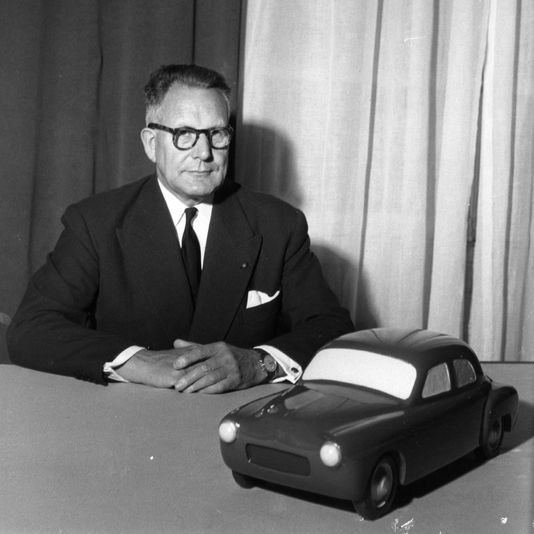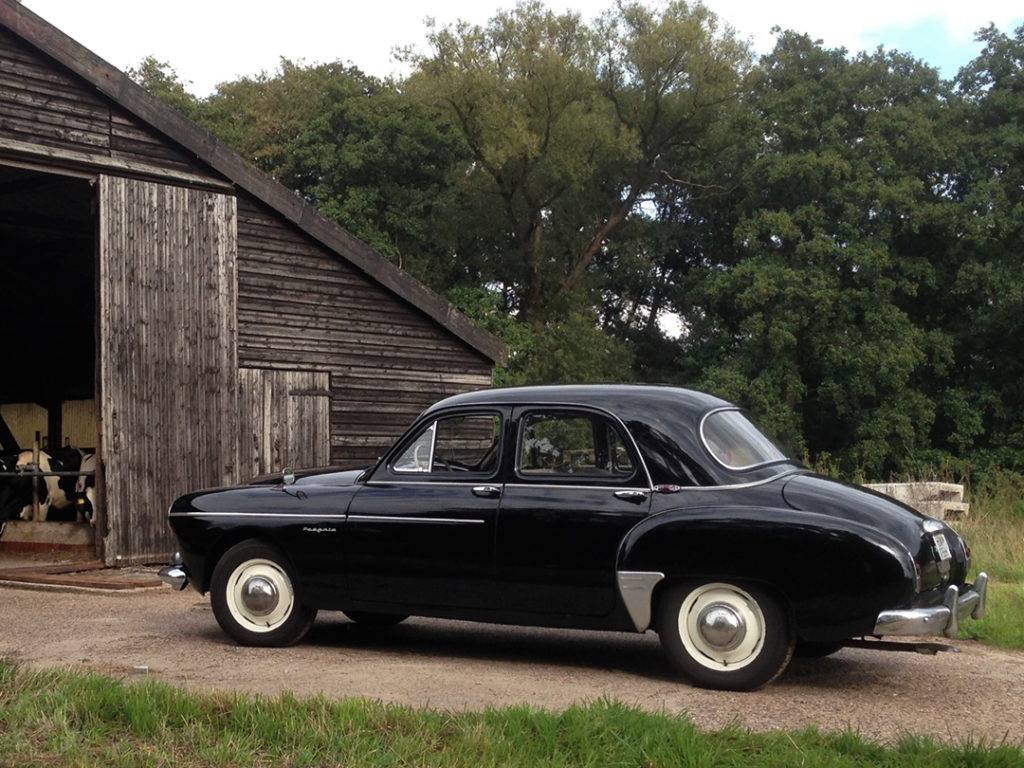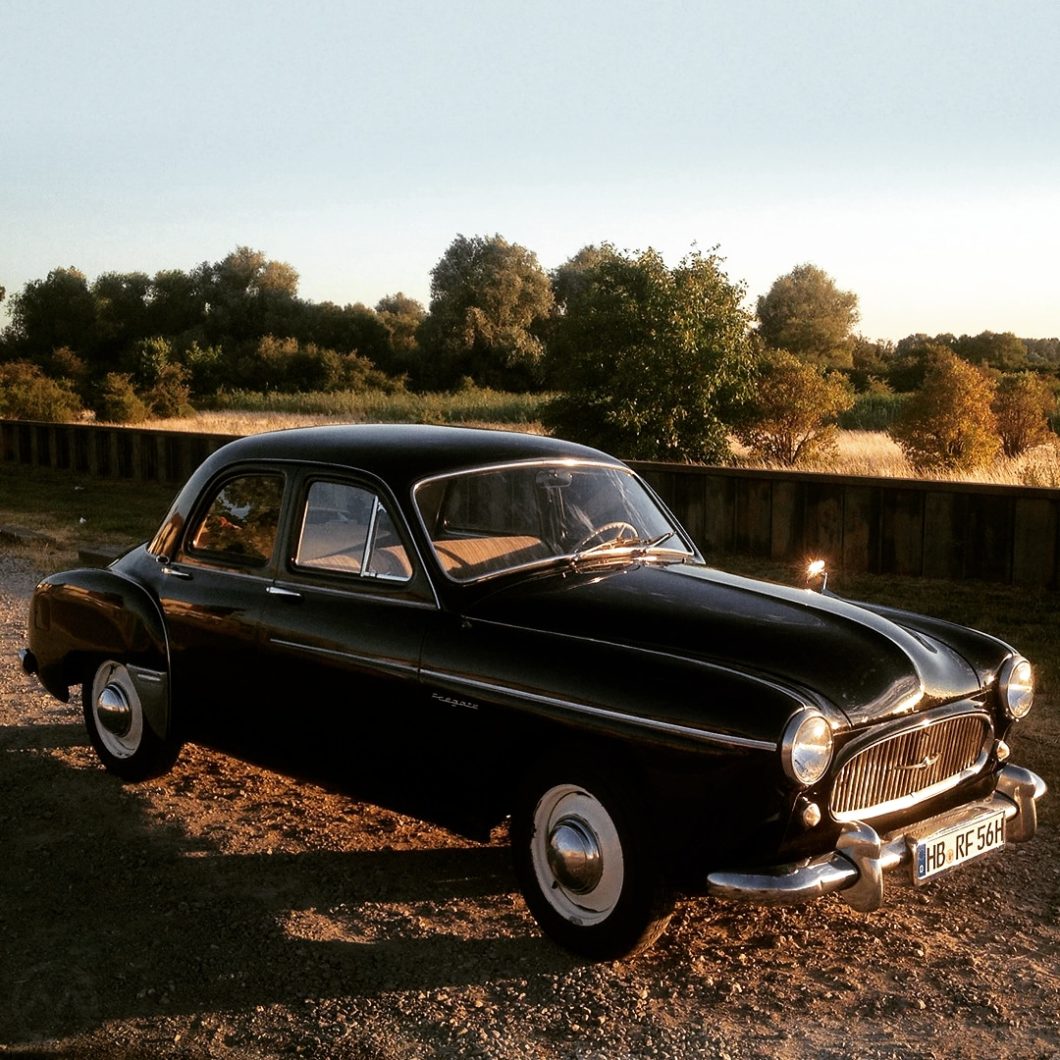It was November 30th, 1950 when Renault CEO Pierre Lefaucheux the company’s newest car – the Renault Frégate – to great fanfare. The car would be in production for a decade, sort of, but had only been in development for a little over a year that day at the Palais de Chaillot in Paris.
The story, of course, begins much earlier.
Lefaucheux was a French resistance fighter with a doctorate in law and industrial management background. He’d worked in railways, boilers, and munitions before the war. A WW1 veteran, he became a well-known resistance leader during the second world war before being captured just a few days before the D-day invasion.
In the chaotic aftermath of the German retreat from France and establishment of the Provisional Government of the French Republic, Louis Renault had been arrested as a collaborator and pre-war political polarisation (primarily between communists and anti-communists) quickly resumed.
Recently freed, Lefaucheux was appointed to take command of Renault. That was on October 4, 1944. Three months later, the company was nationalized, becoming Régie Nationale des Usines Renault.
He was a steady hand capable of understanding both workers and politicians and a respected hero. He’d need all the advantages he could get – Renault’s factories had been repeatedly hit by Allied bombing raids and the company’s capacity to build things was sharply reduced.
Even if the factory hadn’t been in such bad shape, like all European manufacturers Renault faced steep shortages of raw materials and supplies. The company was also caught between the competing interests of Communist and Anti-Communist politicians, trade unions, dealers used to selling luxury cars, and export drives.
Despite its origins during the war, Lefaucheux was probably very pleased to find that a new economy car, the 4CV, was nearly ready thanks to engineers Charles-Edmond Serre and Fernand Picard, among others, who had developed it largely in secret during the war.
In 1945, Renault was producing only one car – the Juvaquatre, its lowest-end pre-war model. That was all it could build at the time. Traditionally, the company had offered a range of much larger cars, and many dealers and executives wanted those cars to return. Lefaucheux had to sell them on the 4CV.
The Government, too, wanted Renault to make mid-sized family cars as part of the postwar plan for modernizing and rebuilding France’s car industry – the Pons Plan. Lefaucheux’s 4CV didn’t fit into that box, but he was well connected enough to ignore the plan. The 4CV was ready and perfect for postwar austerity.
The little new car turned out to be a bonanza for Renault when it was launched the following year – it was a cash cow that the domestic market could not get enough of.
But like the dealers, Lefaucheux also wanted a larger car to compete with Citroën and formally replace the departed prewar Primaquatre. There had been plans for such a car as early 1940 but little development work had been done. The car ultimately became the Renault Frégate – but its protracted gestation was directly affected by two other wars.
The Drawing Board
Aside from the 4CV Renault also had other projects on the drawing board at the close of the war. “107E” was a reskinned Primaquatre with 1942-Chevrolet-like lines, a big 1000KG van, which would later become the Goélette, and loose plans – but not actual prototype – for a replacement for the big Vivastella.
The 107E looked dated even in prototype form. Although many other European manufacturers were content to rework prewar cars for the first few years after hostilities and Citroën didn’t replace the Traction Avant for another decade, Renault just didn’t believe “107” would sell. A new idea was right around the corner.

The success of the 4CV and inspired “Project 108E,” a rear-engined 2-liter sedan. “108” looked rather like a Tatra 600, which isn’t a surprise given that they were about the same size, of similar configuration, and similarly lozenge-shaped. The 108 was aerodynamic and light – under 1000kg for a six-seater – but troubled.
At least one 108 prototype survives today, but the project repeatedly ran into development problems centering around (but not limited to) cooling the new 2.0L. engine. Attempts to resolve the cooling problems ruined the lines or the interior space, which was tight for its size. As such, the 108 was nowhere near production ready by 1949. With time ticking by, Renault binned the 108 and started a crash program for a front-engined sedan instead – project 110.
In the background, two far away events were about to force a spectacular acceleration of the 110 program. The French-Indochina War, which began in 1946, slowly began to require more and more resources. By 1950, France was suffering serious setbacks in that conflict.
On June 25, the Korean war began when 75,000 North Korean soldiers poured across the informal border with the Republic of Korea. France committed forces to this conflict too via the UN.
That fall, state-owned Renault was told that military needs might take priority over developing new cars starting on Jan 1, 1951. At the time, Renault was also constructing a large new factory – Flins, a factory that some politicians were eyeing for defense purposes.
But if the new 110, to be called Frégate, was already in production there, that couldn’t happen. Thus, the rush was on to get the car out the door. And rushed it was.
The Frégate Emerges
The public got to see the car’s very American lines, inspired by the 1949 Chevrolet and Buick, at the Palais de Chaillot as described above. The looks were penned by Robert Barthaud, who also styled the Crossover-like Renault Colorale in the same period. The Colorale was much taller, based on a van, and intended for off-road as much as on.
The name is French for Frigate, like the warship, and some cars had a three-masted ship or nautical tillers on their badges.
The Frégate chassis was a unibody and the independent suspension setups pioneered on the 108 project were retained and modified to suit the new car – it handled very well for a big (by European standards) family sedan. It was meant to seat six in comfort.
Unfortunately it was not anywhere near “fully cooked” when Lefaucheux took the wraps off at the Palais de Chaillot, and as soon as the fanfare was over, the company went quiet on when the cars would be delivered. It was nearly a year before production cars emerged at the 1951 Paris show.
When they did, they were underpowered (2L but just 58hp) and trouble-prone – the engine just wasn’t all that powerful and early cars, rushed into production, were plagued with quality problems and fragile rear shock absorbers. Worse still, production had to start at Billancourt and then move to Flins, because the new plant wasn’t finished yet.
The move to Flins coincided with material improvements to the car – notably regarding quality. But that didn’t happen until October of 1952, almost two years after the car’s public introduction – which blunted its momentum.
After the move it came in two trims, the cheaper Affaires and the fancier Grand Luxe, later renamed Amiral. The names would change again in the late 1950s as trims and models were added and subtracted.
The Frégate was big, comfy, and stylish and a good handler too – but it was held back by its lack of speed and its early reputation. The car was briefly offered in the USA in 1953-54 where its original 6.8:1 final drive and loose gearchange did not endear it to many despite its transatlantic look.
Foreign cars were still unusual in America in the early 1950s and the Frégate was definitely one of the more conventional and contemporary foreign cars of 1953. Its looks had been bang up to date at the introduction, only 18 months removed from the GM cars that inspired them.
At a time when Citroën was selling 35,000 tractions a year in France, Renault had only built 50,000 Frégates in total by April of 1954.
A year prior, in hopes of generating interest, the company had commissioned convertible versions from Chapron and Ghia. They were really nice and the public liked them but the cost of putting them into series production was prohibitive. In later years, Chapron built several Frégate Coupes and Convertibles, as did Letourneur et Marchand – all expensive and stylish.
This brings us to a tragic moment in the story of this car and the man who made it happen.

When Lefaucheux arrived at Renault, he preferred to bike rather than drive. He was not a “car man” then. But in his years at Renault he’d become much more of a motorist.
On February 11th, 1955, Lefaucheux was headed to Strasbourg to give a presentation at the Catholic Students’ Union in Strasbourg. Set to take a train, at the last minute he decided to drive instead. In his personal Frégate.
He swerved to follow a detour on the Route Nationale 4, skidded off the road and rolled the car. The car protected him – its shell remained in pretty good shape – but he was struck and killed by his briefcase, sitting unsecured on the back seat. He was succeeded by Pierre Dreyfus.
1955 and On
In 1955, the car got a style update and a higher compression ratio – which helped alleviate some of the performance issues. This was followed in 1956 by an upgrade in displacement, to the 2.1L Étendard with appreciably more power (77hp). A handsome and capacious wagon called the Domaine also joined the lineup that year.
The wagon had lower gear ratios for heavy loads. In time, both sedan and wagon were equipped with an optional a semi-automatic transfluide transmission.
All of these upgrades made the car much better and a much better seller – but in the five years since the Palais de Chaillot introduction, the Simca Vedette, Peugeot 403, and Citroën DS/ID had all arrived. Against these cars, the Frégate seemed stylistically dated despite continual upgrades. The company nevertheless promoted it with long-distance rallies emphasizing its durability.
1955 was the car’s best year for production but competition big quickly. In 1957, the Suez crisis ensured all large European cars encountered headwinds at the dealership, but production continued into 1960. Late in the run the two-tone flagship was called the Grand Pavois, the Affaires had given way to the Caravelle (a name soon to be recycled), and the transfluide-equipped Domaine renamed the Manoir.
~177,000 Frégates were made in the eight years or so it was in volume production.
The car was a relative rarity in its final years and was belated replaced by the Renault Rambler. In actuality, this car was an AMC Rambler classic built in CKD form in Belgium. The big Rambler was a smallish car by American standards but big for France, and was even rarer than the Frégate had been. The Rambler gave way to the R16, although the Frégate’s most direct successor wouldn’t emerge until the 30 in 1975, and even that was smaller than the Frégate had been.
Although we typically present only original photography, the photos of the black 1955 Frégate you see here were taken by (and are ©) Oliver Söhlke. Oliver’s car was originally delivered in Switzerland and lives in Germany today following some light restoration after sitting in a barn for 13 years. It’s been featured at the Bremen Classic Motorshow. Oliver also runs MyOldMac.net (if you like old macs as much as old cars, it’s a gem).

